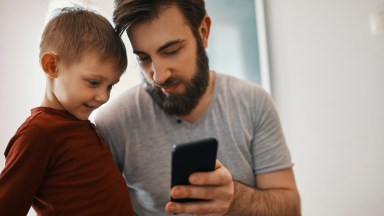In a world where marketers are tasked with engaging consumers across a growing abundance of channels and platforms, it can be challenging to establish relationships that feel genuine and personal. And while brand building remains global marketers’ top objective, mass reach channels may not always fit the bill.
With a focus on brand building, marketers are continually looking for ways to stay top-of-mind with potential buyers. To do this, many are turning to social media—and influencers—to make more personal (and profitable) connections with consumers. Global marketers plan to increase their social media spend by 53% in the next year, more than any other channel. And social media remains global marketers’ most bankable channel, as 64% of of the global marketers surveyed for this year’s Annual Marketing Report say it’s their most effective paid channel.
And it’s easy to see why marketers are putting so much spend behind social media and influencer marketing. Nielsen Scarborough found that 42% of Americans seek the advice of others for purchase decisions, and they want that advice to come from relatable sources. And when it comes to being relatable, influencers can forge more relevant connections with consumers than many other sources. According to the 2021 Nielsen Trust in Advertising study, 71% of consumers trust advertising, opinions and product placements from influencers.
Interestingly, not all influencer promotions begin with a brand. In fact, influencers often serve as the inspiration for major brand campaigns. For example, influencer Barbara Kristoffersen’s video featuring a Gap hoodie in a color the company hadn’t manufactured since the early 2000s caused the #brownhoodie hashtag to go viral, generating a collective engagement rate of 188.35% while sparking an influx of the no-longer-made hoodies on resale sites for up to $300.
Quick to capitalize on the organic traction its brand was seeing, Gap worked with additional influencers to create the #gaphoodie campaign, which garnered over 6.5 million views. The brand also brought back the previously retired shade of brown, which was met with such fanfare that it quickly went on back order.
And all that engagement translates into awareness, affinity and recall for brands. Nielsen’s Brand Impact service has measured the effectiveness of influencer ads in nearly 200 campaigns. According to first-quarter 2022 norms from this research, an average of 80% of influencer ad viewers were able to recall seeing the brand featured in the ads. Further, influencer ads drove a 9-point increase in both brand affinity and purchase intent relative to consumers who did not see the influencer ads.
Recognizing consumer preference for relatable, personal connection, shoe brand Aldo paired with influencers that matched their brand persona to promote its #StepIntoLove social media campaign. The campaign encouraged viewers to create and share videos of themselves dancing along with the campaign hashtag for a $5,000 prize. The TikTok campaign garnered more than 5 billion views and increased Aldo’s brand awareness by 2.5%, according to Nielsen InfluenceScope data.
Influencers can be a powerful tool to increase brand awareness for marketers capable of hitting the right combination of persona, content and engagement. Brands that align themselves with the right influencers can become a trusted source for consumers—and the brand they remember when they want to make a purchase.
For additional insights, download Building better connections: Using influencers to grow your brand



